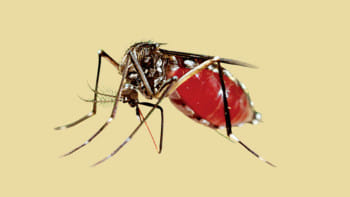Celebrating the taste of Punjab

Kurry Accent, an authentic Indian restaurant located in Gulshan-2, has always brought forward the diverse tastes of India, a country that can be compared to a continent. India is home to a multitude of different cuisines and platters that synchronise in perfect unison, making the act of eating food an event of celebration.
Kurry Accent recently arranged its one-of-a-kind food festival, this time, celebrating the legacy of the breadbasket of Punjab, India under the name 'Virasat-e-Punjab,' which took place from 25-31 January, 2020.
A fitting name to the land of five rivers woven into a cultural synthesis of stories, arts, and culture, all of which have made a formidable imprint on the culinary delights from this unique region of India.
To highlight the tastes, aroma, and sounds of authentic Punjabi cuisine, Chef Sherry, was flown in to present the delectable flavours and aromas first-hand. Sherry is a home-trained chef from Shimla, who was raised in the centuries-old tradition of homemade Punjabi cuisine that become an embedded identity. She has been engaged in cooking since the age of 13.
Sherry has been involved with multiple pop-ups in the leading hotels and restaurants throughout India, and runs her own catering business. When asked about Punjabi cuisine, she said, "It is a general misconception that Punjabi cuisine is often relegated to Butter Chicken, whereas it is not Punjabi in essence. Punjabi food is much richer in heritage and flavour, with a tender balanced mix of spices in them."
Punjabis are a vibrant and colourful bunch, with diverse cultural and ethnic influences embedded into their cooking habits. Punjab is the agricultural powerhouse of India, with flat fresh out of the oven rotis and parathas as its major staple dish, alongside a wide array of dairy products at its disposal. The culture of 'sanjha chulha', which was often used in the yesteryears, where women of the household would gather to bake fresh bread, has carried onto this day where the primacy of bread is conspicuous on the table.
When asked about Punjab's signature dishes, she said it was the Meat Beliram, a mouth-watering tender delicacy with an interesting history of its own. It has been said that the Maharaja of Patiala caught his chef, Beliram joyously eating this dish, which he then wanted for himself. That is eventually how this splendid dish came into existence.
Simple and rustic. That is how Punjabi cuisine is defined. One of the consistent features of cooking done in Punjab in the past, and even the present, is the slow cooking done to ensure the perfect bite, with the right amount of flavours. Maah Di Daal, one of the iconic lentils of the province, is slowly cooked overnight, and saturated with vegetables, providing bountiful flavours to your taste buds.
Punjabis belong to three major denominations of faith — Hindu, Muslim, and Sikh, but what is unique about them, according to Sherry, is that they all incorporate vegetables into their food. In Muslim households, vegetables are always a complementary combination, alongside meat.
For vegetarians, a dish of special and aesthetic significance is the Pindi Chole, which, according to chef Sherry, displays the "magic of slow cooking with old spices and chickpeas soaked together to provide a classic Punjabi taste with a wafting smell and tasty treat."
Dairy products are abundant in the Punjab, and lassis are commonplace, as they are rich in pure ghee, seen as a remedy, helping with food digestion.
The dessert of the Punjabi winter is Gajar Ka Halwa, a carrot-based sweet dessert pudding, with a splendid taste, as an ending to what would seem like a good meal altogether.
This is the legacy of the Punjab, with each dish sown from a history of family and belonging. Rustic and ever so pure in its specialty that one does not ever seem to lose the train of taste after having a bite of truly authentic Punjabi cuisine.


 For all latest news, follow The Daily Star's Google News channel.
For all latest news, follow The Daily Star's Google News channel. 



Comments